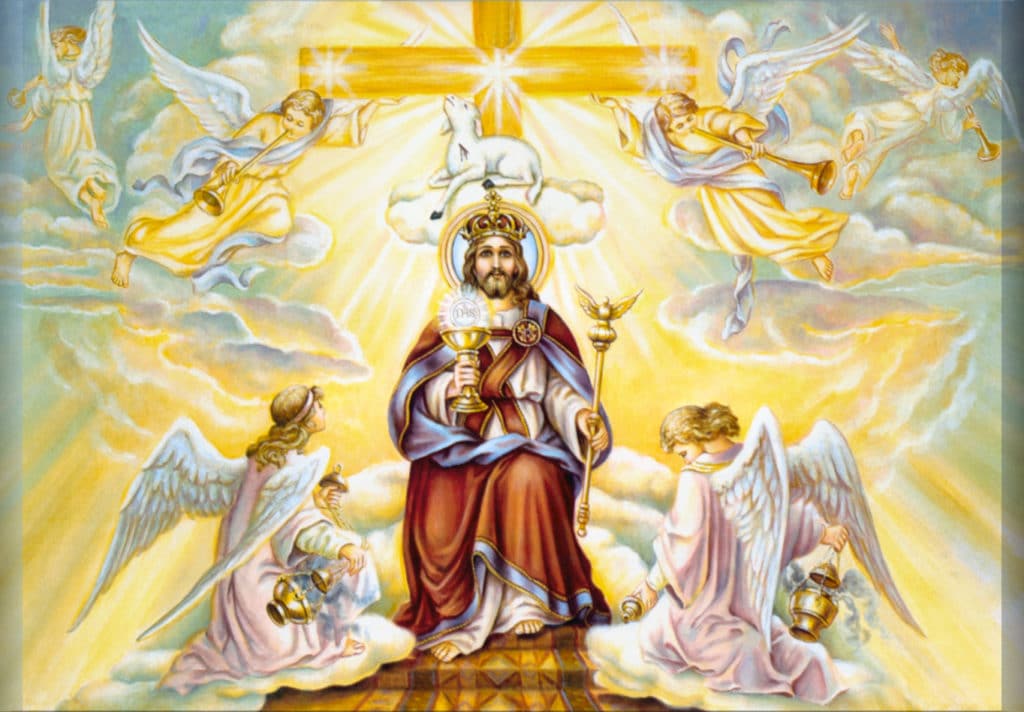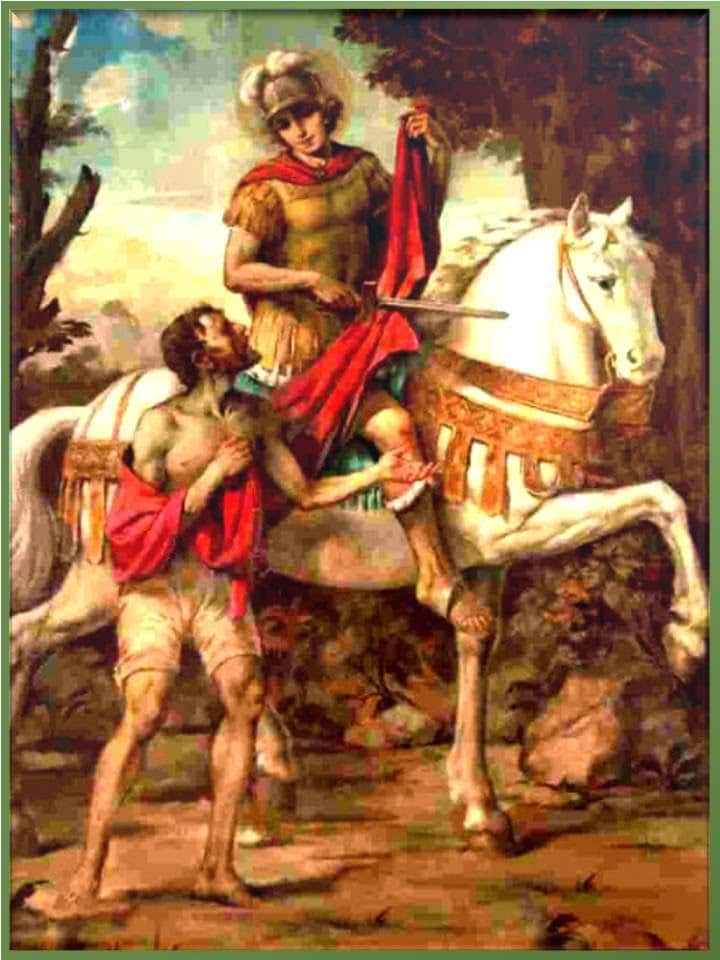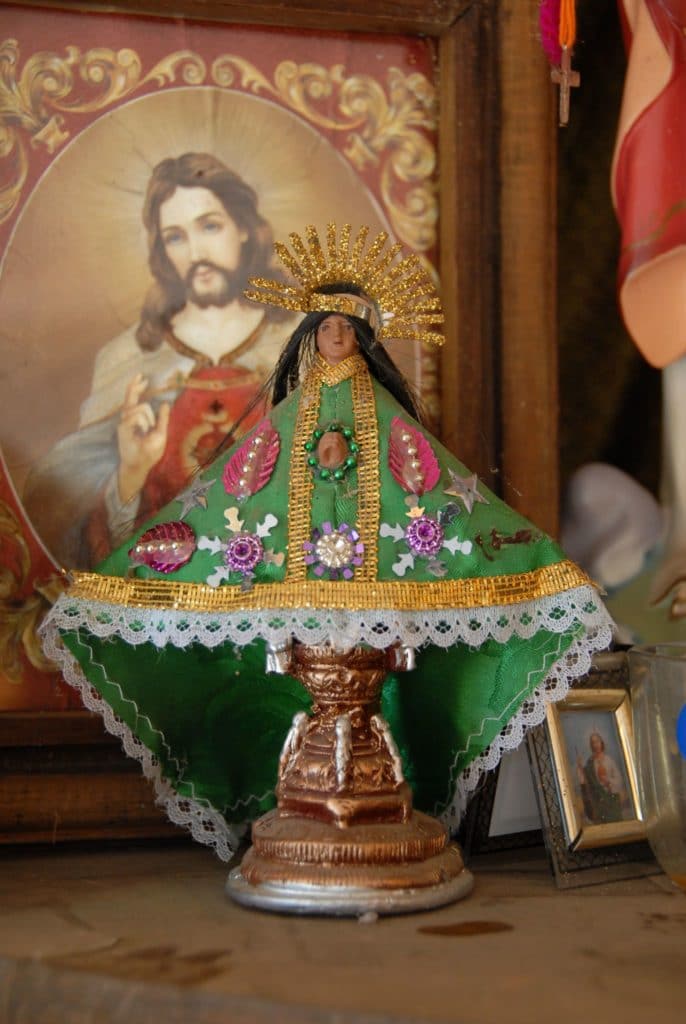Do you know who is Jesus True God and True Man?
Who was Jesus True God and True Man ?, better known worldwide as the savior of this world, the son of God, the word, the one who gave his life in love and rescue for all humanity. In the following article we will know if Jesus is true God and True Man.
Jesus True God and True Man
The recognition that Jesus True God and True Man , that is to say, the doctrine of the 2 natures, came to be established at the council of Chalcedon in 451 AD This kind of doctrine of the double nature of Jesus comes to transcend the horizon of human experience and imagination; which is a great mystery.
The incarnation of the Son of God is described in the book of Philippians 2:6-8 as a kind of humiliation of himself, which says:
“Who, being in the form of God, did not consider equality with God a thing to be grasped, but emptied himself, taking the form of a servant, being made in the likeness of men; and being in the condition of a man, he humbled himself, becoming obedient to the point of death, and death on a cross.”
Jesus came to share with men the entire spectrum of both psychic and physical sensations. As a human being of flesh and blood he also had the respective needs of him. The book of Luke 2:52 goes so far as to report that Jesus himself grew in wisdom, stature, and favor with God and men.
He came to rejoice with the happy at the great wedding at Cana. Furthermore, he was a man who cried with those who were sad and suffered when Lazarus died. He became hungry when he was in the desert for 40 days and 40 nights. He was thirsty when he was at Jacob’s fountain.
He was a person who suffered the pain under the whipping given to him by the Roman soldiers. When he came to face death on Calvary’s cross, he confesses:
“My soul is very sad, until death”
Matthew 26:38
Our Lord Jesus Christ is truly 100% man; The book of Hebrews 4:15 affirms it, which in that same chapter highlights the difference with all other men since it describes that: He has no sin.
To the same extent, Jesus Christ is the true God or 100% God. The sacred scriptures or the word of God come to attest that the Lord Jesus is the true son of God and that in the same way he is God. At the baptism of the Lord Jesus, a voice was heard from heaven saying:
“This is my beloved Son, in whom I am well pleased”
Matthew 3:17
Likewise, at the moment of the transfiguration, the Father came to emphasize that Jesus is the Son of God, where he indicated that he must be heard, according to the book of Matthew 17:5.
The words of Jesus that says:
“No one can come to me unless the Father who sent me draws him”
John 6:44
And the other one found in the book of the same apostle John:
“No one comes to the Father except through me”
John 14:6
They are those that express that God, the Father, and God the Son, possess the same kind of Divine authority. The father who is in heaven brings men to his son, and the Son is the one who brings man to the Father.
Only as the true God Jesus Christ could he affirm the following:
“I and the Father are one”
John 10:30
Coming to express in a simple language that he is of the same nature as the Father who is in heaven. Other biblical quotes that come to prove that Jesus is true God are the following:
The way to come to proceed of the Apostles after their ascension:
“They, after having adored him [Jesus Christ], returned”
Luke 24:52.
What is expressed in the book of John 1:18 which says:
“No one has ever seen God; the only begotten Son, who is in the bosom of the Father, he has made him known.”
John 1:18
What was stated by the Apostle Thomas himself after having seen the Resurrected God who said:
“My Lord and my God!”
John 20:28
The confession of the nature of Christ in the great hymn to Christ which says:
“In him dwells all the fullness of the Godhead bodily”
Colossians 2:9
The testimony of 1 John 5:20 which goes so far as to say:
“And we are in the true, in his Son Jesus Christ. This is the true God, and eternal life.”
And finally the great statement that says in the Bible:
“God was manifest in the flesh”
1 Timothy 3:16
Jesus, True Man and God
Jesus came to assume human nature without having to stop being God: he is the true God and the true man.
First: The Incarnation of the Word
“When the fullness of time had come, God sent his Son, born of a woman.”
Galatians 4:4
The promise of a Savior that God made to Adam and also to Eve when they were expelled from Paradise or the Garden of Eden is fulfilled, so he says:
“I will put enmity between you and the woman, and between your offspring and her offspring; he will step on your head while you stalk his heel”
Genesis 3:15.
This verse from the book of Genesis is known by the term protoevangelium, because it is the one that constitutes the first announcement of the good news of salvation to humanity. Typically, it has been interpreted that the woman who is talked about so much is Eve, in a direct sense, as in the case of Mary, in a full sense; and that the lineage of the woman comes to refer both to humanity as well as to the Lord Jesus Christ himself.
From that moment, until the moment in which “the Word became flesh and dwelt among us” (John 1:14), God came to prepare everyone so that they could fruitfully welcome the son of God. Therefore, God chose for him the people of Israel, who established an alliance and gradually formed it, intervening in its history, coming to manifest his designs through the patriarchs and prophets and sanctifying them for himself.
And all this, as a preparation and as a figure of that new and great Covenant that was to be concluded in Christ himself and of that full and definitive revelation that was to be effected by the Word himself once incarnated. Although God prepared the coming of his beloved son the Savior above all through the election of the people of Israel, this does not mean that he abandoned the other peoples, “the so-called Gentiles”, because he never left to bear witness to himself.
Divine providence was what made the Gentiles come to have a much more or less explicit awareness of the need for salvation, and even in the last places on earth they come to retain the great desire to be redeemed by him. .
The incarnation has its origin in the love of God for all men:
“In this the love that God has for us was manifested, in that God sent his only Son into the world so that we might live through him”
1 John 4:9
The Incarnation becomes the quintessential demonstration of the great Love of God towards all humanity, because in it it is God himself who gave himself up for all of us, becoming a participant in human nature in the unity of person.
After the fall of Adam and Eve in paradise, the Incarnation has a saving and also a redemptive purpose, as is professed in the Catholic creed:
“For us men and for our salvation, he came down from heaven and became incarnate by the Holy Spirit of the Virgin Mary, and became man.”
Christ came to affirm of himself that:
“The Son of man has come to seek and save what was lost”
Luke 19:19 – Matthew 18:11
And also his word says that:
“God has not sent his Son to condemn the world, but so that the world may be saved through him”
John 3:17.
The Incarnation not only manifests the infinite love of God for all human beings, his infinite mercy, his justice and also his power, but also the coherence of the divine plan of salvation. The profound divine wisdom is manifested in how God has made the decision to come to save man, this means, in a way that makes it more convenient to his nature, which is precisely through the Incarnation of the Word .
Jesus Christ, who is the Incarnate Word, “is not a myth, nor is it any abstract idea; But of a man who lived in a specific context and who also died after having led his own existence within the evolution of the history of humanity. Historical research on Him is, then, a kind of requirement of the Christian faith itself.
That Christ existed is what belongs to the doctrine of faith, as in the same way that he really died for all of us and that on the 3rd day he rose again. The existence of the Lord Jesus becomes a proven fact by the same historical science, above all, by the analyzes of the New Testament whose historical value is beyond any doubt.
There are other types of ancient testimonies of non-Christians, Jews and pagans, about the existence of Jesus. Necessarily for this reason, the positions of those who come to oppose a historical Jesus to the Christ of Faith are not acceptable and come to defend the assumption that almost always what becomes the New Testament says about Christ which would be a interpretation of the faith that the disciples of our Lord Jesus came to make.
However, not of what is its historical figure that still remains hidden for all the following generations. These kinds of positions, which on several occasions contain a strong prejudice against the supernatural, fail to take into account that contemporary historical research agrees with the confirmation that the presentation that early Christianity makes of Jesus based on on the actual events that occurred.
Second: Jesus Christ, God and True Man
The Incarnation becomes “the mystery of the admirable union of the divine nature and the human nature in the one Person of the Word.” The Incarnation of the Son of God our beloved Lord Jesus:
“It does not mean that Jesus Christ is part God and part man, nor that he is the result of a confused mix between the divine and the human. He became truly man without ceasing to be truly God. Jesus Christ is true God and true man.”
The divinity of Jesus Christ, the eternal Word of God, has been studied to deal with the Holy Trinity. The church was defending and clarifying this kind of truth of faith in the course of the first centuries against the heresies that many falsified. Already by the first century certain Christians who were of Jewish origin, like the Ebionites, came to regard Christ as a simple man, albeit a very holy person.
In the second century, adoptionism emerged, which came to hold that our Lord Jesus is simply an adopted son of God; Jesus would only be a man in whom resided a great force of God; for these people, God was just 1 person.
This kind of heresy came to be condemned in the year 190 by Pope Saint Victor himself, by the Council of Antioch in the year 268, by the Council of Constantinople and also by the Roman Synod of 382. The Arian heresy, upon arrival to deny the great divinity of Jesus, he denied in the same way that Jesus Christ was God. Arius came to be condemned by the Council I of Nicaea itself, in the year 325.
Similarly, today the church has again recalled that our Lord Jesus is the true Son of God subsisting from eternity who in the Incarnation came to assume human nature in his unique divine person.
The church in the same way came to face the other errors that were denying the reality of the human nature of Jesus. Among these were all those heresies that came to reject the reality of the body or soul of Jesus.
Among the first, Docetism can be found, in its various variants, which has a Gnostic and Manichaean background. Some of his followers went so far as to affirm that Christ came to have a heavenly body, or that his body only appeared to him, or that he simply appeared in Judea without having to be born or grow up. Saint John had to fight against these types of errors since he says the following:
“Many are the seducers that have appeared in the world, who do not confess that Jesus has come in the flesh”
2 John 7 and 1 John 4:1-2.
Both Arius and Apollinaris of Laodicea came to deny that Jesus Christ ever had a true human soul. The 2nd has come to be of particular importance in this field and in terms of influence it became present over the course of many centuries in subsequent Christological controversies.
In a simple attempt to be able to defend the unity of Christ and also his impeccability, Apollinaris even held that the Word was performing the functions of the human spiritual soul. This doctrine, however, meant denying the true humanity of Christ himself, which was composed, as in all men, by the body and the spiritual soul. This character came to be condemned in the Council I of Constantinople and also in the Roman Synod of the year 382.
Third: The Hypostatic Union
At the beginning of the fourth century, after the various preceding controversies, the need to firmly sustain what is the integrity of the 2 natures, the human and the divine in the Person of the Word, was very clear; so that the personal unity of Christ begins to become the focus of Christology and also of patristic soteriology. New discussions contributed to this kind of new insight.
The first great controversy came to have its origin in certain classes of affirmations of Nestorius, the patriarch of Constantinople, who used a type of language in which he came to imply that in Christ there are only 2 subjects:
- The Divine Subject
- The Human Subject
Which are linked to each other by a kind of moral bond, however, not physically. It is in this type of Christological error that it has its origin in terms of its rejection of the title of Mother of God, Theotókos, which is applied to the Holy Mary. The Virgin Mary would be the Mother of Christ however, not the Mother of God.
Faced with these kinds of heresy, Saint Cyril of Alexandria and also the Council of Ephesus in the year 431 came to remember that
“the humanity of Christ has no other subject than the divine person of the Son of God who has assumed it and made it his own since its conception… That is why the Council of Ephesus proclaimed in the year 431 that Mary truly became the Mother of God through the human conception of the Son of God in her womb.
A few years later the Monophysite heresy emerged. This kind of heresy has its antecedents in Apollinarianism and also in a misunderstanding of the doctrine and likewise of the language used by Saint Cyril himself by Eutyches, the great old archimandrite of a monastery in Constantinople.
Eutyches always affirmed, among other things, that Christ became a Person who subsists in 1 single nature, this because it is the human nature which would have been absorbed in the divine. This type of error came to be condemned by Pope Saint Leo the Great, in his entitled Tomus ad Flavianum, the authentic jewel of Latin theology, and it was also condemned by the Ecumenical Council of Chalcedon in the year 451, which the only point of reference that is obligatory for Christology.
That way it teaches the following, verbatim words:
“We must confess one and the same Son and Lord Jesus Christ: perfect in divinity and perfect in humanity”
And therefore he adds that the union of the 2 natures becomes:
“without confusion, without change, without division, without separation”.
The Chalcedonian doctrine came to be confirmed and also clarified by the same Second Council of Constantinople in the year 553, which comes to offer a kind of authentic interpretation of the previous Council.
After underlining on many occasions the unity of Christ, they affirm that the union of the 2 natures of Christ which takes place according to the hypostasis, thus overcoming the ambiguity of the Cyrillic formula that was the one that spoke of a kind of unity according to the “physis”.
In this line, the Second Council of Costantinople came to indicate in the same way the sense in which the well-known Cyrillic formula of “a nature of the Word of God incarnate” had to be understood, the well-known phrase that Saint Cyril always thought was from Saint Athanasius, but nevertheless, it was actually an Apollinarian forgery.
In these kinds of conciliar definitions, which came to have the purpose of clarifying certain types of concrete errors and not exposing the mystery of Christ in its entirety, the Council Fathers used what is the language of their time.
In the same way that Nicaea came to use the term consubstantial, Chalcedon uses terms such as:
- Nature
- Person
- Hypostasis etc.
According to the usual meaning that they had in common language, and also in the theology of their time. This does not usually mean, as some have affirmed, that the evangelical message was Hellenized. The truth is that they were shown to be rigidly Hellenistic since they were precisely the ones who proposed certain classes of heretical doctrines, such as Arius or Nestorius, who did not know how to see the limitations that the philosophical language of their time encompassed in comparison. to the mystery of God and of Christ.
Fourth: The Most Holy Humanity of Jesus Christ
“In the Incarnation human nature has not become assumed, not absorbed.” That is why the Church has been teaching that the full reality of the human soul, with its various operations of intelligence and will, and of the human body of Christ. However, at the same time, she has had to remember on each of the occasions that the human nature of Christ comes to belong properly to the divine person of the Son of God who is the one who has assumed it.
Everything that it is and what it does in it comes to belong to “one of the Trinity”. The Son of God is the one who communicates, then, to his humanity his own way of existing in the Trinity. Thus, in his soul as in his body, Christ comes to express in human form the divine customs of the Trinity.
The human soul of Christ is endowed with true human knowledge. Catholic doctrine, for example, has typically come to teach that Christ as a man came to have a kind of acquired knowledge, a kind of infused science, and also the blessed science which is proper to the blessed in heaven.
The acquired science of Christ could not become limitless in itself: “that is why the Son of God himself, by becoming man, wanted to progress “in wisdom, as well as in stature and grace”.
Verbatim you can read it in the book of Luke 2:52
And you can also acquire what in the condition of man is acquired in a much more experimental way. Christ, in whom the fullness of the Holy Spirit comes to rest with his gifts, also had science infused, that is, that type of knowledge that is not acquired directly by the work of reason, but becomes directly infused by God Himself into human intelligence.
Indeed, “Christ the Son, in his human knowledge, always equally demonstrated the kind of insight he had into the secret thoughts of the hearts of men themselves, Mark 2:8 and John 2:25.”
In the same way, Christ had the science proper to the pious, that is to say: “Due to his union with divine Wisdom in the person of the Word who was incarnate, the human knowledge of Christ always fully enjoyed the science of eternal designs. that he had come to bring and reveal.”
For all this, it must be affirmed that Christ himself as a man becomes infallible: one does not have to admit the error in Him since it would be admitting it in the Word, the only person existing in Christ. As far as reference is made to a kind of eventual ignorance that is strictly speaking, it must be borne in mind that “what it acknowledges to ignore in this field, it declares elsewhere that it has no mission to reveal it.”
It is understood that Christ himself had to be humanly aware of being the Word and of his mission to save the world from eternal death. On the other hand, Catholic theology, thinking that Christ came to have already on earth what was the immediate vision of God, has always denied the existence in Christ of the virtue of faith.
Faced with the monoenergeta heresies and also the monothelites that, in a logical continuity with the preceding monophysitism, came to affirm that in Christ there is only one operation or only one will, the Church came to confess in the III Ecumenical Council of Constantinople, in the year 681, that:
“Christ has some 2 wills and also some 2 natural operations, divine and human, not opposed, but rather cooperating, in a way that the Word made flesh, in his obedience to the same Father, has come to humanly want everything who has decided in his divinity with the Father and with the same Holy Spirit to be able to give salvation to people.
The human will of Christ is one that “follows his divine will without resistance or opposition, but rather the opposite, becoming subordinate to this omnipotent will.” This is an essential kind of question since it is directly associated with the very being of Christ and also with our salvation.
Saint Maximus the Confessor distinguished himself in this doctrinal effort of clarification and used with great efficiency the well-known passage of the prayer of Jesus performed in the Garden, in which the agreement of the human will of Christ with what the will of the Father is, you can see in the book of Matthew 26:39.
The Consequence of the duality of natures becomes likewise the duality of operations. In Christ there are 2 kinds of operations, which are:
- The Divine, which are from his divine nature.
- The Humans, which are those that come from human nature.
Theandric operations are even mentioned in the same way to be able to refer to all those in which the human operation acts as a type of instrument of the divine: which is the case of the miracles that were performed by our beloved lord Jesus Christ.

Hello! Let me enthusiastically introduce myself as a dedicated blogger fueled by an intense passion for meticulously crafting insightful and well-researched blogs. My mission revolves around providing you, dear readers, with a veritable treasure trove of invaluable information.







